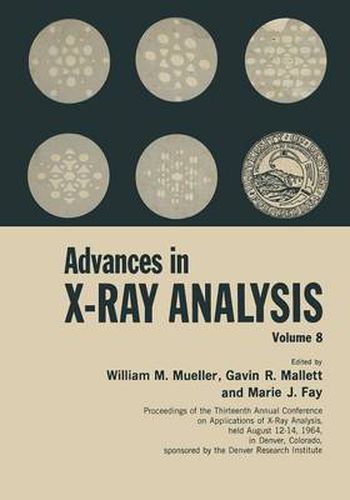Readings Newsletter
Become a Readings Member to make your shopping experience even easier.
Sign in or sign up for free!
You’re not far away from qualifying for FREE standard shipping within Australia
You’ve qualified for FREE standard shipping within Australia
The cart is loading…






This title is printed to order. This book may have been self-published. If so, we cannot guarantee the quality of the content. In the main most books will have gone through the editing process however some may not. We therefore suggest that you be aware of this before ordering this book. If in doubt check either the author or publisher’s details as we are unable to accept any returns unless they are faulty. Please contact us if you have any questions.
A real need exists for ways to bridge the gap between basic research and prac tical application, for faster utilization of new discoveries and new developments in the world of technology, and for technical transfer of defense and space accomplish ments to the civilian economy. The problem is compounded by the torrential flow of technical information. Thirty million books are available on technical subjects, the total increasing at the rate of six hundred every day. There are one hundred thousand technical journals. More scientific work has been published in the past ten years than in all preceding recorded history. Scientists and engineers only a few years beyond academic pursuits are already encountering a continuing need for retraining and expansion of their own knowledge. At the same time, the re searchers - scientists, engineers, students - must exhibit bold creative thinking to evolve new technology, to better understand nature’s secrets, to conceive new theories, and to reduce old theories to practical utilization. Research in the physical sciences and the engineering sciences provides the ever-flowing spring of knowledge for the investigation of new ideas. Such research is sometimes hindered by classification as basic or applied.
There are many times when a research program has no immediate or ultimate objective and is truly contributing to our reservoir of knowledge - a reservoir which will certainly be tapped in the future.
$9.00 standard shipping within Australia
FREE standard shipping within Australia for orders over $100.00
Express & International shipping calculated at checkout
This title is printed to order. This book may have been self-published. If so, we cannot guarantee the quality of the content. In the main most books will have gone through the editing process however some may not. We therefore suggest that you be aware of this before ordering this book. If in doubt check either the author or publisher’s details as we are unable to accept any returns unless they are faulty. Please contact us if you have any questions.
A real need exists for ways to bridge the gap between basic research and prac tical application, for faster utilization of new discoveries and new developments in the world of technology, and for technical transfer of defense and space accomplish ments to the civilian economy. The problem is compounded by the torrential flow of technical information. Thirty million books are available on technical subjects, the total increasing at the rate of six hundred every day. There are one hundred thousand technical journals. More scientific work has been published in the past ten years than in all preceding recorded history. Scientists and engineers only a few years beyond academic pursuits are already encountering a continuing need for retraining and expansion of their own knowledge. At the same time, the re searchers - scientists, engineers, students - must exhibit bold creative thinking to evolve new technology, to better understand nature’s secrets, to conceive new theories, and to reduce old theories to practical utilization. Research in the physical sciences and the engineering sciences provides the ever-flowing spring of knowledge for the investigation of new ideas. Such research is sometimes hindered by classification as basic or applied.
There are many times when a research program has no immediate or ultimate objective and is truly contributing to our reservoir of knowledge - a reservoir which will certainly be tapped in the future.